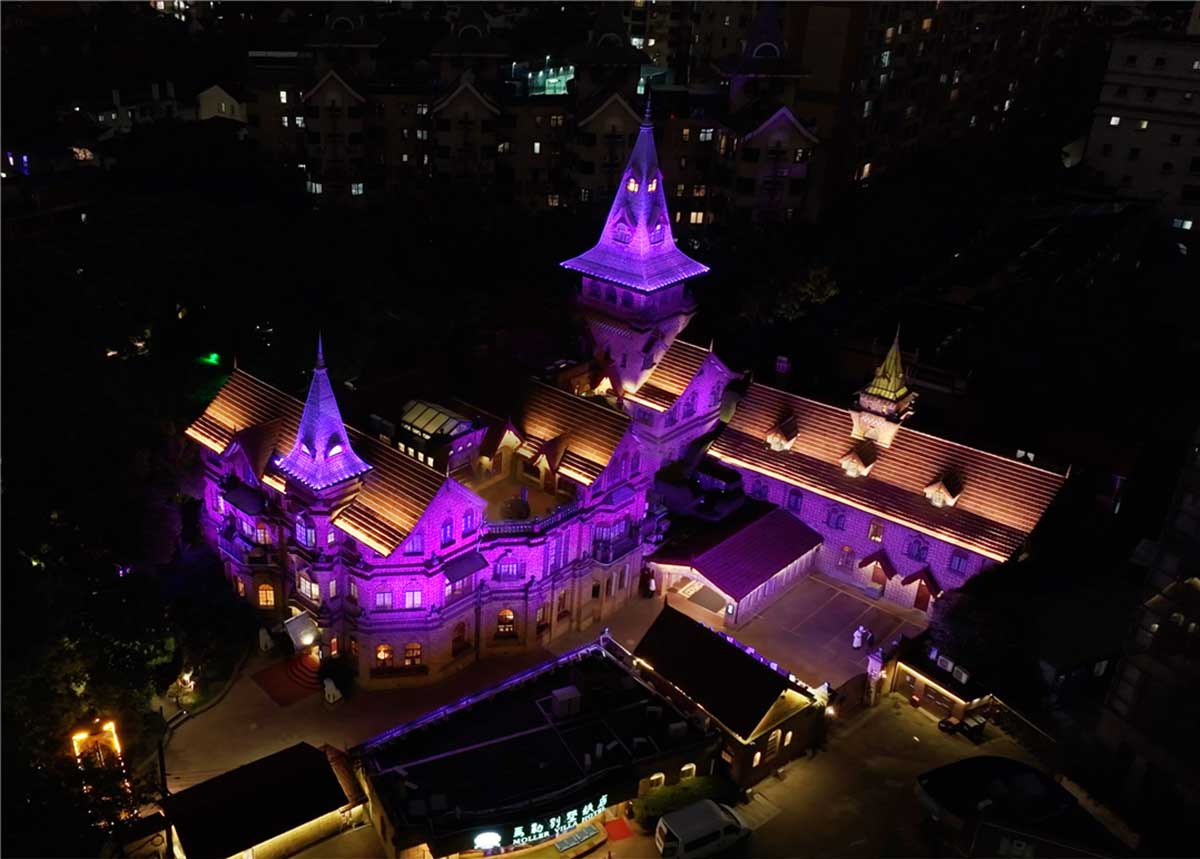Mastering LED Dimming for Efficient Outdoor Lighting
LED dimming offers ultimate lighting efficiency & versatility by adjusting illumination depending on your tasks or mood. Overall, it provides precise brightness control to suit diverse outdoor settings and save energy. This article unravels LED dimming tech.

1. What is LED Dimming?
LED dimming is a light control system that adjusts brightness based on application preferences. In general, LED fixtures can attain dimming through digital multiplexing, digital addressable lighting interface, 0-10V dimming, phase cut dimming, and pulse width modulation. It saves energy for outdoor uses.
2. How Does LED Dimming Work?
LED fixtures can achieve the dimming feature by controlling the circuit's current. LED fixtures work, unlike traditional lights that reduce voltage to attain dimming. Overall, different dimming methods suit diverse uses.
3. How to Choose the Right LED Dimming
Ensure you install the suitable LED dimming to attain optimal results. Thus, consider critical elements like the dimming method, wattage capacity, and bulb types. This section provides insights on how to select the right LED dimming.

3.1) Wattage
Wattage is critical since dimmer switches must handle specific load capacities to avoid overheating and flickering. In addition, some LED dimmers feature minimum load capacities to achieve proper operation.
3.2) Compatibility
Compatibility is critical for achieving reliable and smooth performance. Manufacturers often provide compatibility guidelines since incompatible fixtures can result in a limited dimming range, buzzing, or flickering. Simply put, different dimmers suit different bulb types, including halogen, LED, compact fluorescent, and incandescent bulbs.
3.3) Single-Pole
Single-pole dimmers control LED from one switch location. In other words, they suit large or small-scale applications requiring one switch to control the entire lighting connection. They have simple installations to suit residential and commercial spaces.
3.4) Four-Way | Three-Way
This category features LED with multiple switches, three for a four-way circuit and two for a three-way setup. In any case, the lights provide convenience since they allow you to adjust brightness levels from different locations within the same space. Yet, it is critical to ensure compatible wiring and proper installation.
3.5) Plug-In
Plug-in dimmers suit portable fixtures like LED lamps for convenient and flexible use. The plug-in dimmer requires no electrical wiring and has a slide control or rotary knob for adjusting brightness. Overall, they are a flexible and portable solution.
4. Types of LED Dimming
LED dimming employs diverse lighting controls to manage brightness levels. Typical options include digital multiplexing, digital addressable interface, 0-10V dimming, pulse width modulation, and phase-cut.
4.1) Digital Multiplex
DMX (digital multiplex) is a communication protocol for controlling LED lights in architectural or theatrical settings. It can facilitate control over several lighting channels through a synchronized system to enable highly flexible dimming.
4.2) Digital Addressable Lighting Interface
DALI (digital addressable lighting interface) communication protocol enables control over each light within a multiple-light circuit. It facilitates bi-directional control for precise LED brightness level control. Overall, it suits offices and commercial buildings.
4.3) 0-10V Dimming
This method uses a low-voltage signal to adjust the brightness level. In general, the dimming level varies depending on the voltage signal, where 10 volts indicates the maximum brightness level. It is flexible and suits retail spaces and warehouses.
4.4) Pulse Width Modulation
PWM (pulse width modulation) is a LED dimming tech that rapidly turns the lights OFF and ON. It provides smooth dimming while maintaining high color quality to suit automotive uses. PWM offers precise LED light brightness control for customized use.
4.5) Phase-Cut Dimming
This LED dimming tech adjusts the voltage during the AC waveform portion. Overall, it is classified as trailing edge or leading edge dimming. Trailing edge dimming offers smooth dimming while the leading edge cuts each cycle's AC voltage.
5. LED Dimming Best Practices
Typical LED dimming best practices include proper installation, high-quality bulb use, attaining minimum load capacity, and ensuring compatibility. Most importantly, they involve troubleshooting common issues like dropping off.

5.1) Eliminate Flickering
Flickering can result from incorrect installation, poor-quality bulbs, and incompatible switches. Thus, it would help to consider electrical checks to address the underlying causes. Ensure you meet the minimum load capacities to eliminate flickering.
5.2) Fix Low Glow
Residual electricity in LED lighting circuits forces the fixtures to produce faint light when turned off. You can install a bleeder device to dissipate residual electricity or try a different brand with fewer low-glow effects.
5.3) Light Popping On
Light popping on can result from incompatible bulbs or mismatched dimmer settings that cause the LED lights to jump to full brightness. Therefore, the best solution would be to adjust the dimmer settings to attain smooth brightness level transitions.
5.4) Fix Dropping Off
On the other hand, dropping off can result from insufficient load capacity, bulb incompatibility, or mismatched switches. It causes the LED lights to turn OFF suddenly and hampers smooth dimming. You must ensure compatibility to enhance performance.
6. Advantages of LED Dimming
In any case, LED dimming provides several lighting benefits, such as enhancing productivity, enabling customization, and boosting eye health. However, proper installation and frequent maintenance are critical to leverage these benefits.
6.1) Customization
LED dimming lets you customize your lighting to suit diverse environments, preferences, moods, and tasks. In other words, it allows you to adjust brightness to attain intimate atmospheres for relaxing settings in romantic dinners and gatherings.
6.2) Enhance Productivity
It can enhance productivity by offering apt brightness levels to suit your tasks and optimize visual comfort. LED dimming allows customizable lighting to reduce eye strain and improve productivity by enhancing motivation, mood, and performance.
6.3) Boosts Well-Being
LED dimming can be an excellent tech for boosting well-being through mood enhancement, relaxation, and comfort. It can adjust brightness to ensure a calming atmosphere, improving sleep quality and reducing stress. In addition, LED dimming is a reliable tech for avoiding eye strain and promoting eye health.
7. Conclusion
LED dimming can be a strategic tech to revolutionize your lighting through customization and energy efficiency. It can help enhance productivity and boost eye health, but proper installation is critical. Above all, you need guidance from a technician to help you choose the correct fixture and ensure LED dimming best practices.

8. Install Your LED Dimming Lights with LNJAMI Today!
Do you want to hire technicians to help you install your LED dimmers? LNJAMI is a reliable expert that provides diverse dimming products to suit different settings. Our services are cost-effective and offer diverse outdoor lighting customization options. Upgrade your outdoor lighting with our LED dimming tech to enhance eye health, security, energy efficiency, and productivity. Check out our website for details!








